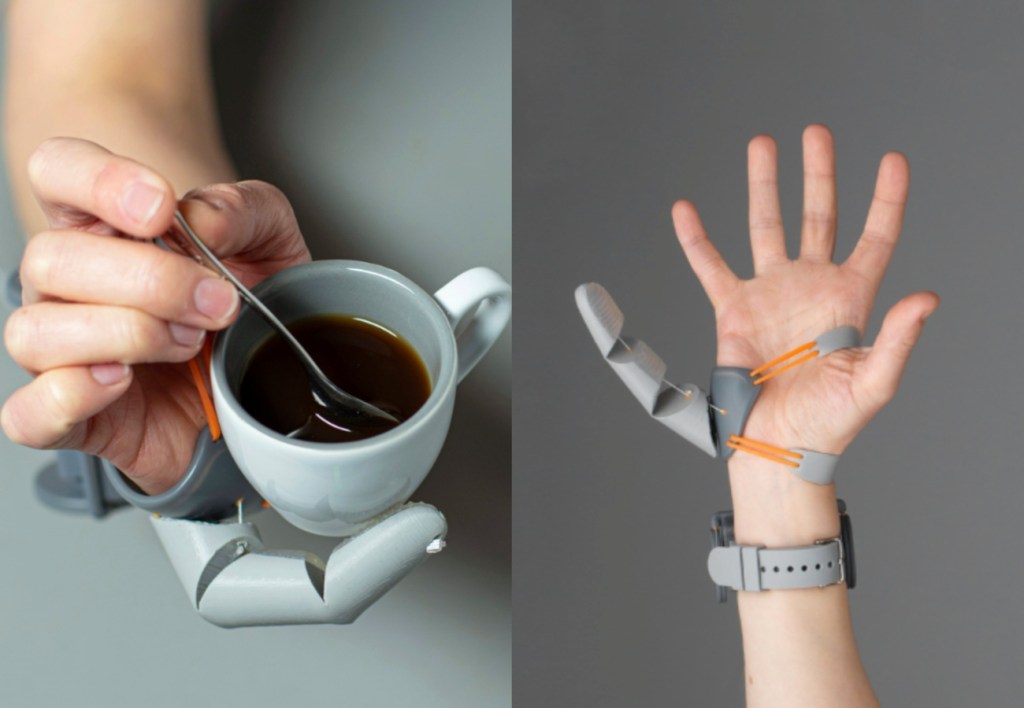Sick of using two hands to open a beer? Well, good news pal, because scientists at the University of Cambridge are making progress on a robotic “third thumb” designed to enhance human productivity and manual dexterity. With this baby, you’ll never lose a thumb war again.
A paper published in the journal Science Robotics this week details the results of a large-scale round of human testing of the third thumb — and the results look promising.
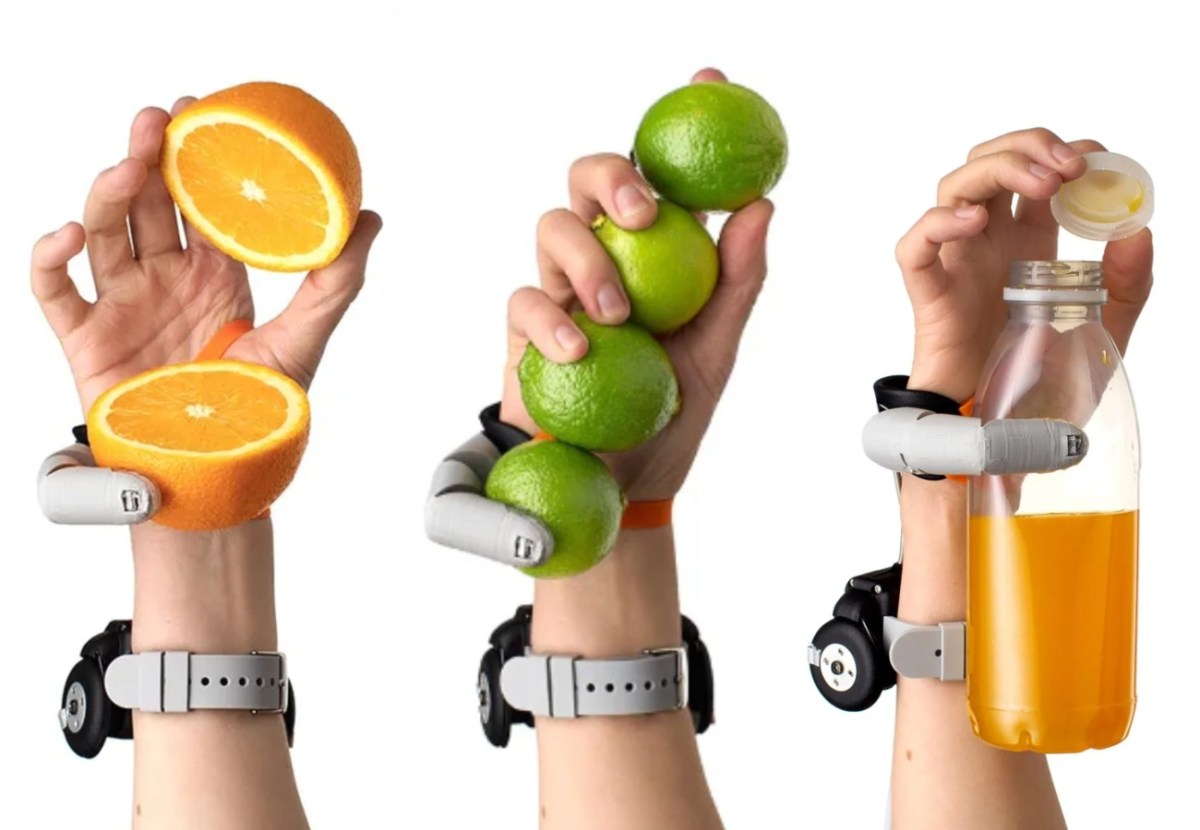
The device, developed by Cambridge University’s Head Designer & Senior Technical Specialist at Plasticity Lab, Dani Clode, as part of an award-winning graduate project at the Royal College of Art, is worn on the side of the hand that is opposite the user’s actual thumb, and is controlled via pressure sensors attached to the feet.
The wearer controls the thumb by applying pressure to sensors placed under each big toe. Pressing the right toe moves the third thumb across the hand, while pressing the left toe moves it up towards the fingers. The harder you press, the more the third thumb moves. When you stop pressing, the thumb returns to its starting position.
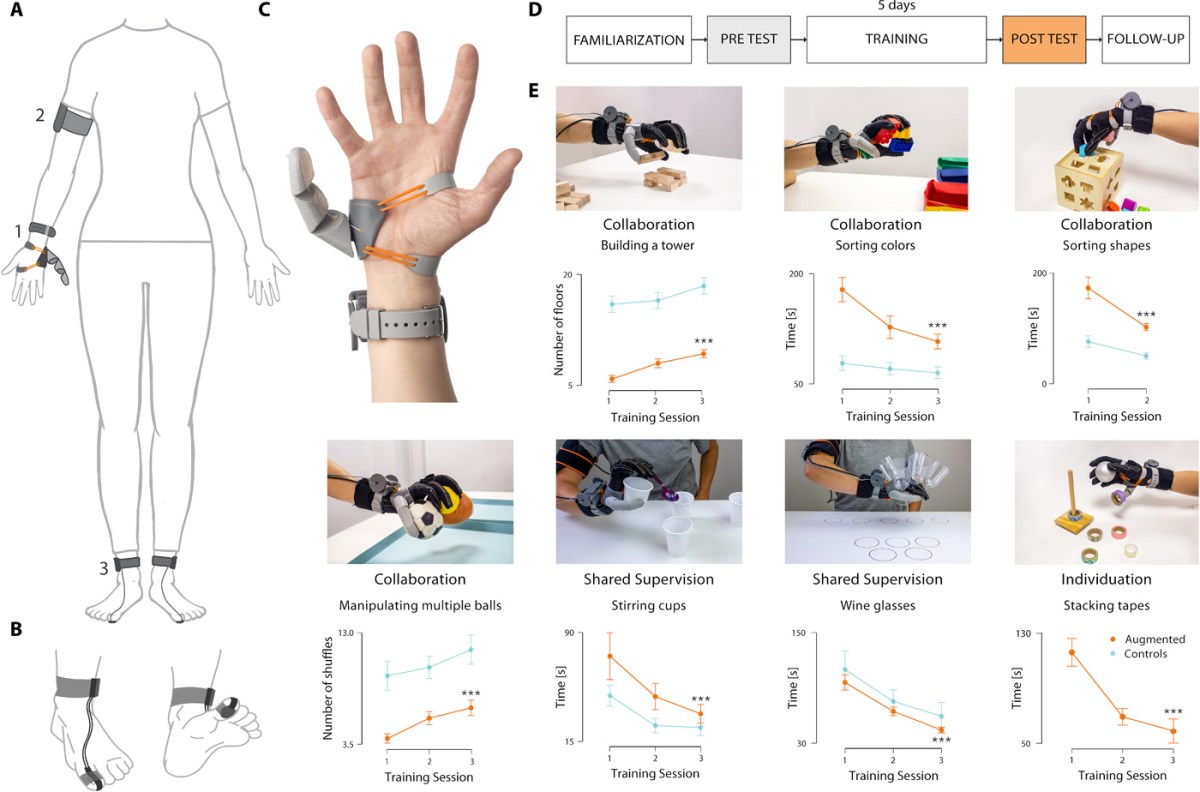
According to the research team, the potential applications for this extra digit are myriad, ranging from the mundane (carrying multiple glasses of water) to the highly skilled (performing intricate surgical procedures).
The paper published this week reveals the results of a 2022 trial at the Royal Society Summer Science Exhibition, which saw 98% of the nearly 600 participants, aged from three to 96, able to successfully use the third thumb to manipulate objects within just one minute.
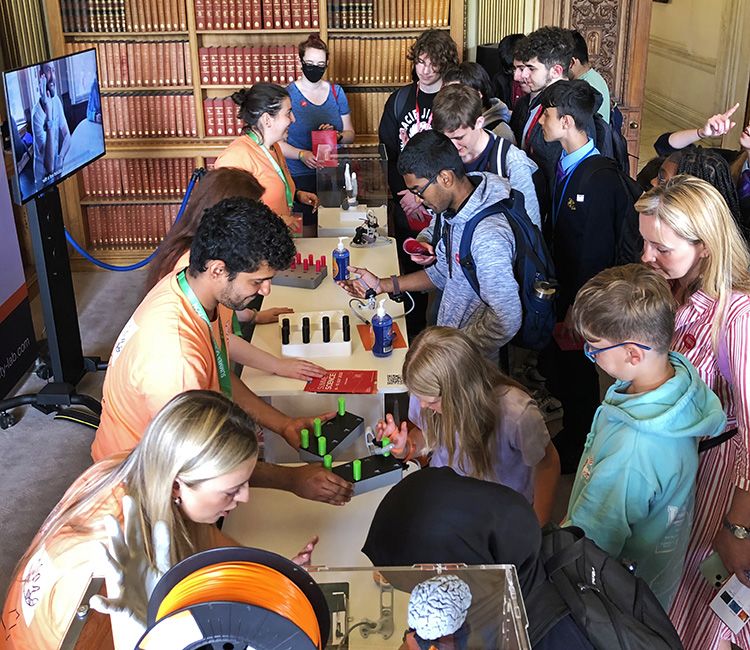
The researchers note that factors such as gender, handedness and manual hobbies had no significant influence on the results, though the device did prove challenging for some very young children due to its size.
While the third thumb is primarily designed for able-bodied individuals looking to push the limits of their manual abilities, the research team also sees potential for the device to assist those with disabilities, as an alternative to traditional assistive technology.
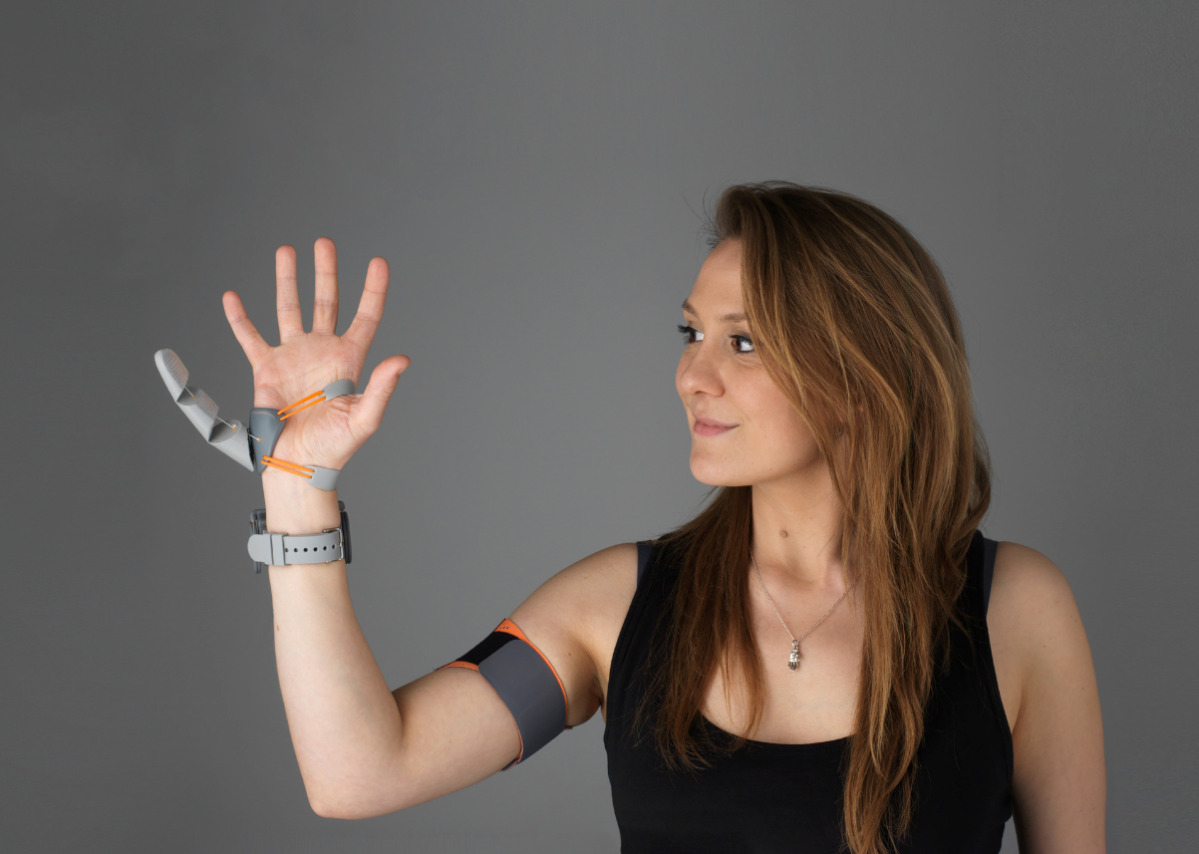
The third thumb’s potential to revolutionise the field of human augmentation is exciting, but as of now, there’s no clear timeline for when it might hit the market. But with rapid advancements in robotics and human augmentation, it may only be a matter of time until you’re using one to crack open a VB.
Wanna see the thumb in action? Check out the video below.
Main image: Dani Clode Design / The Plasticity Lab





